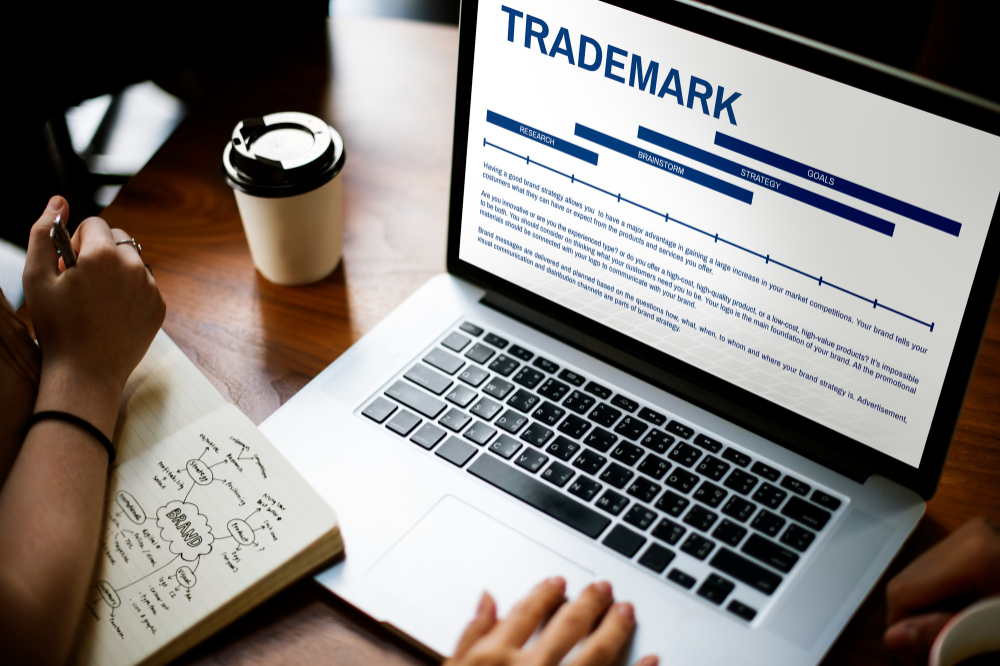In today’s digital age, your brand is more vulnerable than ever. With the rise of online platforms and the ease of access to global markets, the risk of trademark infringement has skyrocketed. Whether it’s a competitor using a similar name, logo, or slogan, or an opportunist trying to cash in on your brand’s reputation, trademark infringement can have devastating effects on your business. It can lead to customer confusion, loss of revenue, and damage to your brand’s reputation, which you’ve worked so hard to build.
Imagine waking up one morning to find that someone has created a website using a domain name almost identical to yours. Worse yet, they’re selling counterfeit products under your brand name. Or picture the frustration of discovering that a competitor has started using a logo that’s eerily similar to your own, misleading customers and diluting your brand’s identity. These scenarios are all too common in the digital world, where information spreads rapidly and intellectual property theft is rampant. The emotional toll, combined with the financial implications, can be overwhelming for any business owner.
The good news is that there are effective strategies to safeguard your brand against trademark infringement in the digital world. By taking proactive steps to protect your intellectual property, you can ensure that your brand remains strong, recognizable, and legally protected. In this article, we’ll explore five essential strategies to defend your brand from infringement and maintain its integrity in the ever-evolving digital landscape.
-
Register Your Trademark Globally
One of the most effective ways to protect your brand in the digital world is to register your trademark not just in your home country, but globally. The internet knows no borders, and neither should your trademark protection. By securing trademark registration in key international markets, you can prevent others from using your brand name or logo in those regions.
Key Points:
- International Reach: With the growth of e-commerce, your products or services may reach customers in countries you hadn’t initially targeted. Registering your trademark in those regions ensures you have legal protection if infringement occurs.
- Madrid Protocol: Consider using the Madrid Protocol, an international system that allows you to register your trademark in multiple countries with a single application. This can simplify the process and reduce costs.
- Preventative Measure: Proactively registering your trademark in countries where you plan to expand or where your brand is gaining traction can prevent others from registering similar trademarks in those regions.
Impact: By registering your trademark globally, you not only secure your brand’s identity in various markets but also deter potential infringers who might be tempted to exploit unprotected regions. This global approach to trademark protection strengthens your legal position and ensures that your brand’s reputation remains intact worldwide.
-
Monitor Your Brand Online
In the digital age, vigilance is key to protecting your trademark. Monitoring your brand online allows you to detect and address potential infringements before they escalate. With the vast amount of content generated daily, it’s crucial to keep an eye on how your brand is being used across various platforms.
Key Points:
- Search Engines: Regularly search for your brand name and related keywords on search engines to identify unauthorized use of your trademark. Look for websites, social media accounts, or online stores that might be infringing on your brand.
- Social Media Monitoring: Use social media monitoring tools to track mentions of your brand on platforms like Twitter, Facebook, Instagram, and LinkedIn. These tools can alert you to potential infringements or unauthorized accounts using your trademark.
- Trademark Watch Services: Consider investing in a trademark watch service, which can automatically monitor the use of your trademark across the web, including new domain registrations, online marketplaces, and more.
Impact: By actively monitoring your brand online, you can quickly identify and respond to potential infringements, preventing them from causing significant damage to your business. This proactive approach not only protects your trademark but also ensures that your customers aren’t misled by counterfeit or inferior products.
-
Enforce Your Rights Through Cease and Desist Letters
When you detect a potential trademark infringement, one of the first steps to take is sending a cease and desist letter. This formal communication serves as a warning to the infringer, demanding that they stop using your trademark immediately. It’s often the first line of defense in protecting your brand.
Key Points:
- Legal Foundation: A cease and desist letter should clearly outline your trademark rights, providing evidence of your registration and detailing how the infringer is violating those rights.
- Tone and Language: While the letter should be firm, it’s important to maintain a professional tone. The goal is to resolve the issue without escalating to legal action, so the language should be assertive but not overly aggressive.
- Follow-Up: If the infringer does not comply with the cease and desist letter, you may need to escalate the matter to legal proceedings. However, in many cases, the threat of legal action is enough to stop the infringement.
Impact: Cease and desist letters can be a powerful tool in stopping trademark infringement before it goes too far. By enforcing your rights, you send a clear message that your brand is protected and that you are serious about maintaining its integrity. This not only resolves the immediate issue but also deters future infringers.
-
Utilize Digital Tools to Safeguard Your Trademark
The digital world offers a range of tools and technologies that can help you protect your trademark. From automated monitoring systems to blockchain-based solutions, these tools can enhance your ability to detect and respond to trademark infringement.
Key Points:
- Automated Monitoring Tools: Services like Google Alerts, Mention, and Brand24 can automate the process of tracking your trademark online. These tools send you notifications whenever your brand name is mentioned, allowing you to quickly address any unauthorized use.
- Blockchain Technology: Some companies are now using blockchain technology to register and protect their trademarks. By creating a tamper-proof record of your trademark, blockchain can provide additional security and proof of ownership in the event of a dispute.
- Domain Name Protection: Consider registering multiple domain names that are similar to your trademark to prevent cybersquatting. This includes variations of your brand name with different extensions (.com, .net, .org, etc.).
Impact: By leveraging digital tools, you can streamline the process of protecting your trademark, making it easier to stay on top of potential infringements. These technologies not only enhance your ability to monitor and respond to threats but also provide additional layers of security for your brand.
-
Educate Your Audience and Partners
Educating your audience and business partners about your trademark rights is a crucial, yet often overlooked, aspect of brand protection. When your customers and collaborators understand the importance of your trademark, they are more likely to respect it and help you protect it.
Key Points:
- Clear Communication: Ensure that your trademark is clearly displayed on your website, products, and marketing materials. This reinforces your ownership and makes it clear that your brand is protected.
- Partner Agreements: Include trademark protection clauses in your agreements with partners, suppliers, and distributors. Make it clear that unauthorized use of your trademark is prohibited and that any infringement will be taken seriously.
- Customer Awareness: Use your platforms to educate your customers about your brand and why trademark protection is important. Encourage them to report any counterfeit products or suspicious activity they come across.
Impact: By educating your audience and partners, you create a network of supporters who are aware of your trademark rights and are willing to help you protect them. This collective effort can significantly reduce the risk of infringement and strengthen your brand’s position in the market.
Conclusion
Trademark infringement in the digital world is a serious threat that can undermine the value and reputation of your brand. However, by taking proactive steps—such as registering your trademark globally, monitoring your brand online, enforcing your rights, utilizing digital tools, and educating your audience—you can safeguard your brand against these risks. Protecting your trademark is not just about legal compliance; it’s about preserving the integrity of your brand and ensuring its longevity in an increasingly competitive marketplace.
By staying vigilant and adopting these strategies, you can navigate the challenges of the digital landscape with confidence, knowing that your brand is well-protected.




